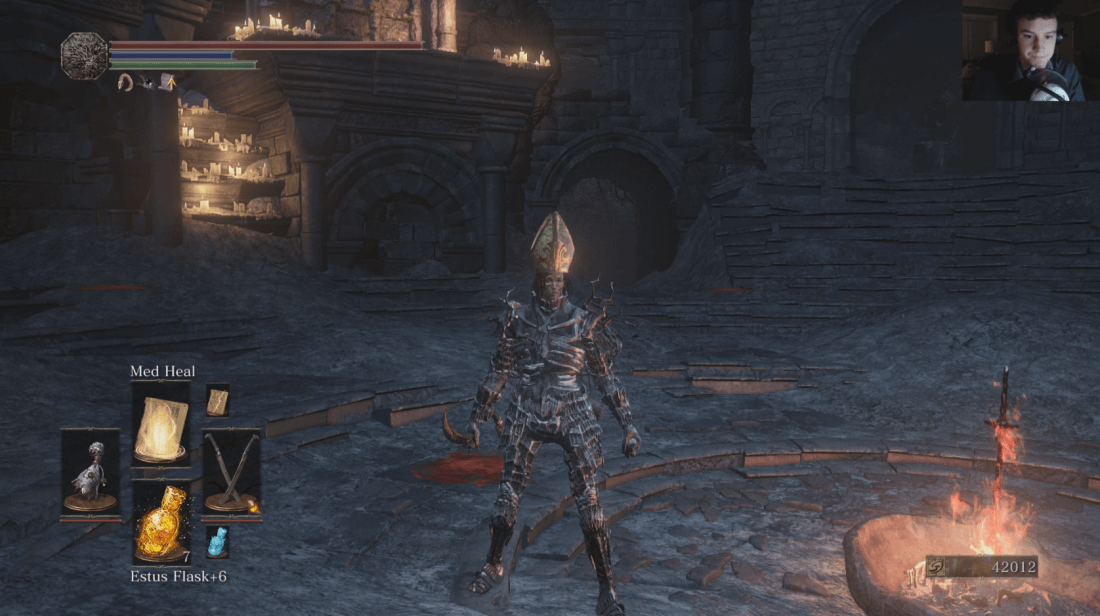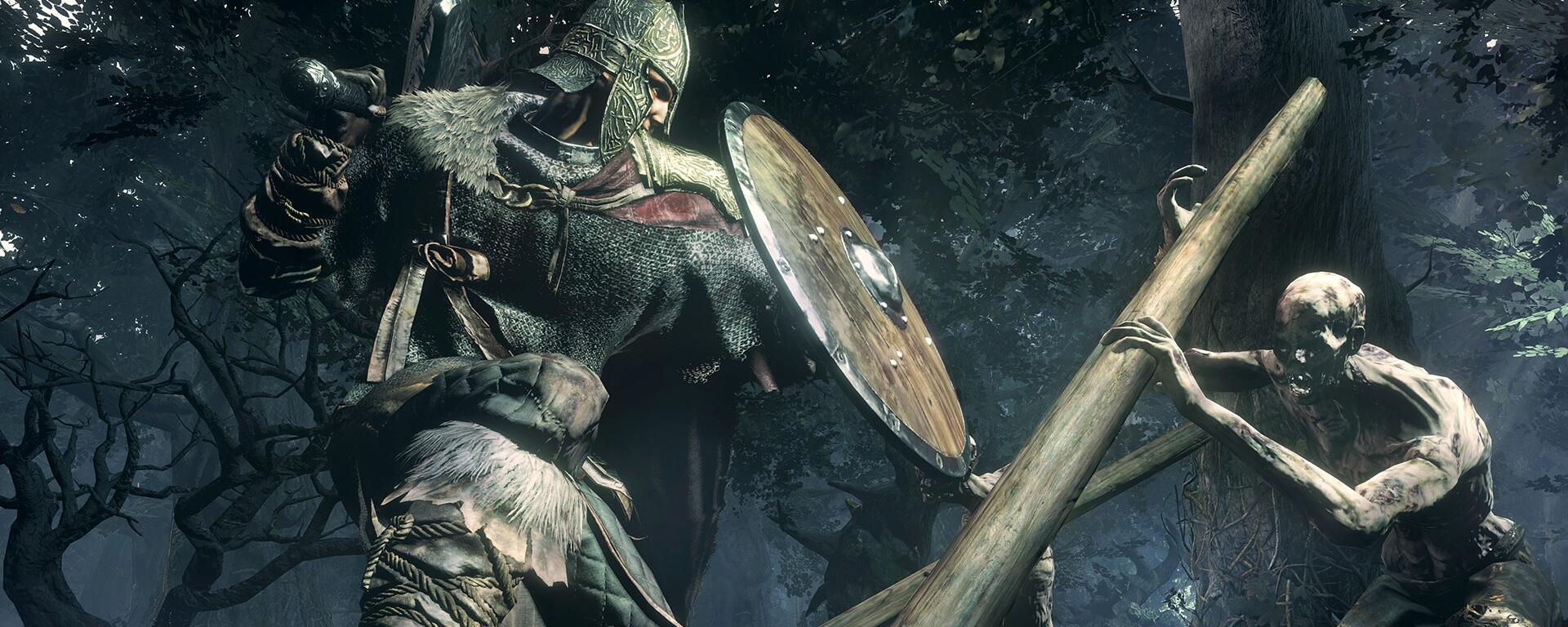 Including Bloodborne, Dark Souls 3 marks the third Souls game in as many years. Dark Souls 2 was disappointing, so is Dark Souls 3 a return to form? Mostly.
Including Bloodborne, Dark Souls 3 marks the third Souls game in as many years. Dark Souls 2 was disappointing, so is Dark Souls 3 a return to form? Mostly.
Playing From Software's Souls games used to feel like joining a private club. Now, nearly seven years after Demon's Souls, the games are played by millions. It'd be impossible for Dark Souls 3 to have the same impact as previous games; it's the nature of sequels. The latest game doesn't reinvent the skeleton wheel, but it doesn't need to. It's not a triumph, nor a revelation. Dark Souls 3 is simply a very good Dark Souls game.
Dark Souls 3 is an action RPG for the Xbox One, PlayStation 4, and PC in which players are thrust into a gothic fantasy world and asked to survive against brutal odds. The narrative connects to the first two games, but story takes a backseat to action, so newcomers won't feel totally lost. In Dark Souls 3, players travel to Lothric, a land of ash and decay. Your task is to defeat the Lords of Cinder, god-like creatures corrupted by power. It's expected that you'll die, as the game is full of enemies (and traps) meant to kill you constantly. Learning from failure is Souls 101, but as you level up and learn to memorize enemy patterns, your path becomes less perilous.
Dark Souls 3 is the fastest Souls game yet, almost a hybrid between earlier Souls games and their faster-paced cousin Bloodborne. There's a swiftness to combat in Dark Souls 3, one that asks you to bob, weave, and roll at a relentless pace. The cranked up speed means you, as a player, can approach Dark Souls 3 in different ways from past games. It's definitely possible to slap on chunky armor with a sword and shield, as was my style in previous games. But in Dark Souls 3, I've incorporated my skills from Bloodborne, preferring a brisk warrior who keeps their distance, often shifting between arrows and two-handed attacks.
As you explore Lothric, you'll find lots of new weapons, armor and gear to use. Dark Souls 3 finds a happy balance between variety and utility, letting players express themselves through their play style and meaningful equipment choices. No armor you pick is too bad, no ring you wear offers a perk that you won't be glad you had sometime. (I love me some stamina rings.) This explain why I've yet to give up my ridiculous pope hat; as I slay demons in the dark, I might as well look rad doing it.

It's a balance the series has lacked in the past. In Dark Souls, there was an enormous variety of equipment to choose from, but only a handful that made sense. If you wanted to wear colorful armor or wield a strange weapon, it meant being at a disadvantage. Though Dark Souls 2 featured an abundance of usable equipment, it was stuck in an inferior game. Bloodborne was even stricter than Dark Souls, severely limiting equipment in service of making each option unique.
Looking cool is one thing, but what keeps me coming back to these games is feeling cool. I've said this before, but it's as true now as it ever was: the sense of triumph after defeating a Dark Souls boss is unlike anything else I've felt in video games. The desire to smash a controller into pieces after dying for the 15th time in a row is erased by the euphoria of winning on the 16th. I scream, shout, and pound the floor like a child while playing Souls, and Dark Souls 3 doesn't lose this. It demands my full attention, and I'm happy to give it. Several sequels in, it feels like Dark Souls and I have come to an understanding. It's no longer the teacher, but I'm not the master. We're familiar sparring partners trying to find a new trick to trip the other up.
Those sorts of tricks spring a number of times in Dark Souls 3, especially toward the end. Too often in Souls games, it's been possible to jump into a fight, haphazardly swing a weapon around, and fumble your way to victory. Dark Souls 3 pushes back on this; a handful of bosses are basically brick walls. They seem insurmountable when you walk in the room, capable of destroying you with a single attack. But slowly, over time, you understand what makes them tick, and the impossible starts to seem possible. Those moments are tied to your mental ingenuity as much as your finger dexterity, and are deeply satisfying.

There's one endgame fight, which I won't spoil, that epitomized this. It took everything I had physically, mentally, and emotionally to see it through. Unlike other bosses, which tend to rely on a few moves that you commit to memory, this one has dozens. In the heat of the moment, it felt infinite. Every few seconds the fight would change, leaving my existing strategy in disarray. I was as likely to survive five minutes as I was to survive five seconds. As the fight raged on and minutes turned into hours, I wondered if this was the one that would break me. Did I need to summon another player for help? Did I need to grind for souls and level up? Or did I need to take a deep breath, trust that my hundreds of hours with these games counted for something, and keep at it?
My breakthroughs were tiny but significant, and they began to stack up. You measure progress against a Dark Souls boss according to two metrics: how much health you took off and how long you survived. Over time, both began to tick upward, but the stress was taking its toll. My palms were sweaty, causing my fingers to slip off the buttons. And you know that phenomenon where you say a word too many times and it stops making sense? That started happening to my hands; I was unable to grip the controller the right way. Nothing felt natural. The fight was stripping me of my motor functions.
But then, one set of sparring seemed to go my way. Hack, slash, dodge. I managed to get the boss within an inch of defeat, and though I died, the closeness of victory was its own victory. The boss was beatable. I could do this. It took another 20 minutes or so, but eventually, their souls were mine. My hands shook for minutes after the fight was over, my breath was erratic. I slept soundly that night.
In all sorts of ways, Dark Souls 3 pulls from the games that came before it. It borrows Demon's Souls' separate energy bar for casting magic spells. (Players can now recharge magic through a new estus flask, and alter the amount of health vs. magic flasks they're carrying at one time.) Demon's Souls, Dark Souls 2, and Bloodborne adopted centralized hubs that splintered off into different areas, while Dark Souls had players gradually connecting the dots on a sprawling landscape, with shortcuts revealing the surprising ways locations tied to one another. Dark Souls 3 does a little bit of both.
That interconnectedness helps Dark Souls 3 feel huge and sprawling, even if you're ultimately being funneled into levels. It rewards curiosity and exploration more than any other Souls game, with secret areas, bosses, and equipment hidden everywhere. It's difficult to keep track of where you're going, which the game delights in taking advantage of; it wants you to feel lost and hopeless. One nightmarish moment found me with little health and zero estus flasks. I'd creep around every corner, clearing rooms with a mixture of care and fear. Each step seemed my last, each hit causing me to flinch. Soon, I found a large area. To my right, a sleeping giant. To my left? A lift that lead to...who knows? I took my chances with the lift, praying for salvation. At the bottom, my patience was rewarded: bonfire. I literally stood up and, in Souls fashion, praised the sun.

Even though I've "finished" the game, I took a look at the game's wiki, and it's clear there's much more to find. More than ever, Dark Souls 3 is okay with you missing things. This has never been a series that concerned itself with players experiencing everything the designers built, but it's entirely possible to never, ever find certain NPCs, side quests, and other optional parts of the game. When I'd talk with friends, they'd ask "Hey, did you see this?" and often the answer was no.
As with Bloodborne, Dark Souls 3 greatly benefits from being built for new hardware; it's gorgeous. Though From Software has never been known for its technical expertise, an issue that raises its head again here, they make up for it in artistry. I'm not usually into fantasy worlds, but hot damn, I love exploring the Soulsverse. The oppressive atmosphere combined with the notorious difficulty might be too much for some, but those things work in concert for me. Rather than dive into item descriptions to learn the underlying story, I let my imagination go wild. The artists and level designers at From Software build their eerie environments with purposeful restraint, letting players wonder what nightmares might have befallen this once-vibrant land.
Like I mentioned, as with any new From Software game, there are technical hiccups. Remember Blighttown? I try not to. The PC version of Dark Souls 3 that Bandai Namco had reviewers playing gave me significant performance problems in some areas, but a recent patch cleared up my issues. While it's difficult to achieve 60 frames per second all the time, this is the cleanest PC version From Software has produced yet. As for the console versions, Digital Foundry's analysis of the PS4 and Xbox One versions suggests the PS4 versionis the better of the two,though both of them are capped at 30 FPS. I'm planning to try out the console versions soon, and we'll be keeping an eye on them after the game's release.
It's unclear whether this truly is the last Dark Souls game, but it sure feels like it. Dark Souls 3 has no problem indulging in connections to previous games, something the series has done quietly but never as explicitly as it does here. It frequently feels as though the series is closing the loop, achieving a sort of resolution. I'm reluctant to say anything more, as the secrets should be experienced on your own, but two moments in particular put a smile on my face. Longtime fans will know it when they see it, but each produced an audible "oh my god" from me.
Souls games have always thrived on their sense of mystery. You were never quite sure what to expect around the corner. Dark Souls 3 does its best to reinvent and remix what's come before, but the game is ultimately unable to overcome a feeling of familiarity. Given that we're three games into the series---and, really, Demon's Souls makes it four---it's not a surprise that fighting dragons, demons, and skeletons isn't nearly as interesting as it was the last time. As a sendoff to the series, Dark Souls 3 is a fine one. It's time for something new.
